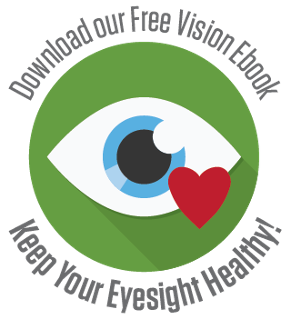By Symphanie Horsford on Feb 1, 2022 @ 11:00 AM
So much of our lives are spent behind a screen, it’s no wonder our vision suffers. More than 50% of people who work on computers have experienced symptoms of Computer Vision Syndrome.
Consistent and prolonged exposure to screens, between remote work and social media, leaves us all vulnerable to Computer Vision Syndrome (CVS), or digital eye strain. If you find yourself experiencing dry or irritated eyes, headaches, or blurry vision, CVS might be worth looking into.
What is CVS?
Computer may be in the name, but that doesn’t rule out screen time for other devices. CVS is caused by the use of digital displays (including computer monitors, tablets and e-readers, laptops, and smartphones) for too long, resulting in the eye muscles being unable to properly recover from the tension. Digital screens emit blue light, which is brighter and more intense than yellow light spectrums we are exposed to like some types of lightbulbs. Causes of CVS may include poor lighting in the room, glare emissions from the digital screen, improper viewing distances (too close or too far away), poor seated posture, uncorrected pre-existing vision problems, decreased blink rate due to prolonged exposure or a combination of these factors. Aging can also add to one’s vulnerability to CVS.
Symptoms of CVS
Computer Vision Syndrome is often characterized by:
- feeling of eye, head, and neck discomfort
- dry eyes
- blurry or double vision
- eye fatigue
- headaches
- neck and shoulder pain
How to protect your eyes from CVS
The most overlooked solution to treating CVS is to see your optometrist. Through a comprehensive eye examination, you and your doctor can take the correct steps in properly treating your CVS. By engaging in regular eye care and making changes in how the screen is viewed as well as how often, can be a big step in combating digital screen-related vision ailments. Some solutions you can include are:
- Rest your eyes - Every 20 to 30 minutes, for a few seconds, look away from the screen. Staring at a screen for extended periods of time can decrease your blinking rate thus leading to dry and tired eyes. Incorporate eye strain relief
- Reduce glare emissions from digital screens - Try to reduce strong light exposure by getting an anti-glare screen cover that fits over your monitor or laptop. Comparably, you could invest in a pair of blue light glasses to ease eye strain. Readjust your workstation.
- Viewing distance and poor seated posture - By adjusting the height of your monitor, you can use the proper focusing area without having to move your head and extraneous amount causing neck and shoulder pain. For instance, if you use a bifocal lower your monitor for better visibility, adversely, if you don’t raise it. Distance is also a big factor. Try to position your monitor at about two feet away.
Remember everyone’s eyes are different so feel free to adjust the screen settings to ones more comfortable for your eyes. While for many people, symptoms will disappear when they stop staring at their screen, CVS can grow worse if it develops and is ignored. So, it is extremely important to schedule your annual eye exam. If you are experiencing symptoms of CVS talk to your optometrist on how best to get relief and keep your vision strong. Looking to take an eye exam at home? Check out our DIY vision exam by clicking the image below!





comments